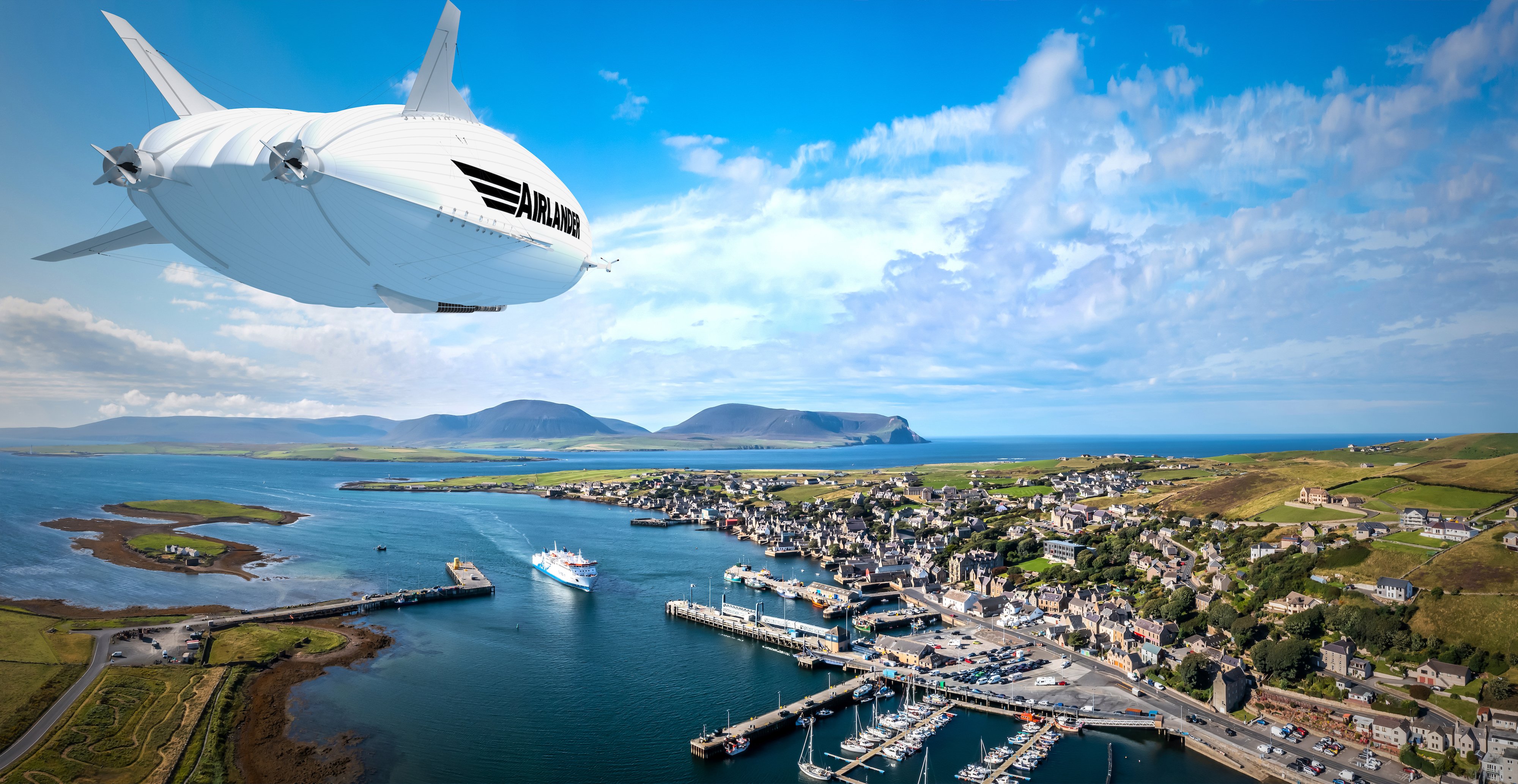Hybrid Air Vehicles (HAV) has made the case for using its planned Airlander 10 airship to provide low-carbon transportation for remote communities in northern Scotland. This week, the UK company released a report outlining the envisaged use case for a vehicle carrying up to 100 passengers or 10 metric tons (22,046 pounds) of freight using small airfields with minimal infrastructure.
The report is based on a study that was partly government-funded through the UK Research and Innovation agency as an element of the Sustainable Aviation Test Environment project, in which HAV is a partner. The exercise was also supported by Highlands and Islands Airports, the Orkney Islands Council, Highlands and Islands Transport Partnership, regional carrier Loganair, Highland and Islands Enterprise, and infrastructure consulting group Aecom.
Much of the anticipated lift for the Airlander comes from its helium-filled hull, which the manufacturer says will significantly reduce the fuel burn required to keep it airborne. Initially, the propulsion system will be based on four combustion engines, with HAV seeking to replace these by 2030 with a hydrogen-electric powertrain with one-megawatt motors. The company is working with Collins Aerospace and the University of Nottingham on plans for hydrogen fuel cells.
Future Hydrogen-Electric Airship Could Cut More Carbon
According to HAV, the turbine-powered version of the Airlander could cut carbon dioxide emissions by 75 percent compared with current jet aircraft. Switching to electric propulsion could increase this figure to 90 percent, albeit with a significant reduction in the standard range of up to 4,000 nautical miles (depending on payload), flying at around 90 mph. HAV has longer-term plans for a larger Airlander 50 model that could carry 200 passengers or 50 metric tons of freight up to 4,600 nautical miles, although most commercial services with either version are expected to be far shorter.
In June 2022, Spanish regional airline Air Nostrum ordered 10 Airlanders. Subject to type certification, initially from the UK Civil Aviation Authority, it expects to take delivery of these in 2027, with HAV planning to build these at a new factory near Doncaster in South Yorkshire for which it has received local government funding.
HAV first conducted a test flight with an Airlander technology demonstrator in 2017 and has since conducted further flight and ground testing. According to the company, it is “now at the point of commercialization” and, while it pursues further orders, it aims to produce the airship at an initial rate of 10 units per year from 2026, with further funding required to launch manufacturing, and a later output of 24 units per year.
The report explored starting Airlander operations at six locations in Scotland: Kirkwall, Papa Westray, Stornoway, Barra, Inverness, Sumburgh, and Scapa Bay. It concluded that less than £2 million ($2.5 million) would be needed to upgrade these airfields.
According to HAV and its partners, deploying the Airlander for freight and logistics services could increase capacity for deliveries in and out of the Highlands and Islands region by as much as 79 percent over 2021, representing an additional 43,800 metric tons annually or 21.9 million average-sized parcels. They concluded this would boost the local economy and services by moving items in a more timely and cost-effective way while contributing to the Scottish government’s objective of achieving net zero carbon regional air transport by 2040.
In September, HAV signed a memorandum of understanding with BAE Systems to explore use cases for the Airlander in defense and security roles. These could include surveillance and reconnaissance flights.
